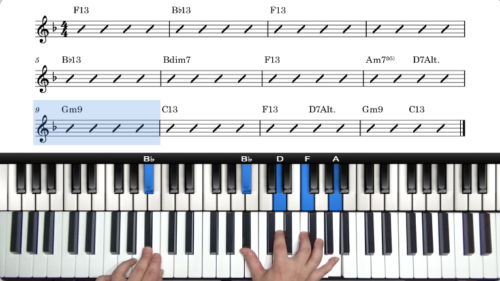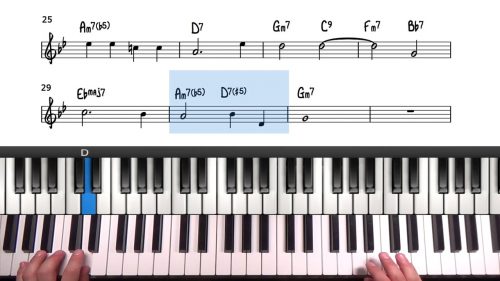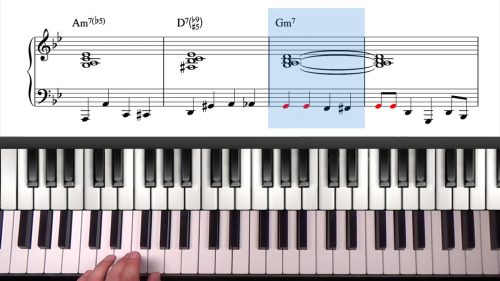The Anatomy Of The Hammond B3 Organ
In this lesson we explore the anatomy of the Hammond B3 organ. We discuss the manuals, drawbars, presets, pedals, percussion circuit, and chorus vibrato settings.
Presets Keys & Drawbars
Once we have turned the organ on, we are ready to select what sound we want it to make. We do this using the preset keys and the drawbars.
The preset keys are the reverse coloured keys on the left end of each manual. When playing jazz organ, we mostly use the ‘A# preset’ and the ‘B natural preset’ which select the drawbars to provide real-time control of the tone of the organ.
We cover some common drawbar registrations used in jazz organ and how to configure these on the Hammond B3 for the upper and lower manuals.
Chorus & Vibrato Settings
The chorus and vibrato is controlled with the 2 switches and the knob in the upper left of the organ. We examine the chorus vibrato settings and how they can be used to achieve a wavering tone with the notes and also to increase the bass and treble frequencies.
The pure vibrato settings are not that common in jazz and are mainly used as a special effect. During these lessons with will concentrate on the dry C3 setting. If chorus is turned on, we will have it set to C3.
The Percussion Circuit
The percussion circuit is specific to the upper manual and is an important part of controlling the Hammond during performance. The percussion circuit only triggers when playing detached on the keyboard. Being able to play detached is an important part of organ technique.
Switching Drawbars During Performance
An important part of performance technique on the Hammond is switching between sets of drawbars to get different sounds during our performance.
We don’t have to completely readjust the drawbars during performance. Instead, we set up a sound on the set of drawbars that are not active, and use the preset keys to easily switch between the 2 sets of drawbars during performance.
Bass Pedals Drawbars
The set of 2 drawbars in the middle of the organ are used to control the pedals. In the lesson on bass lines we will explore the use of these drawbars in more details.
The Leslie Speed Switch
The Leslie switch adjusts the speed of the spinning baffles in the speaker. The Leslie can be set to ‘stop’, ‘slow’ and ‘fast’, but ‘slow’ is not used often in jazz and most jazz players prefer ‘stop’, and ‘fast’.
The Leslie switch can be located in different places on different organs. The ‘half moon’ switch on the front rail is the most common, and you will also encounter switches in the cheek blocks on the side of the organ.
The Bass Pedals & Expression Pedal
The most common technique for playing pedals is what organists’ call ‘heel and toe technique’. When walking a bass line on the pedals, you will use both your heel and your toe.
When playing jazz bass lines, the pedals are predominantly used to play ‘pitch-less thumps’ which support and enhance the rhythmic feel of the bass line played on the lower manual.
The expression pedal is located at the back of the organ. To produce more sound we push the expression pedal toward the floor and we release the pedal to reduce the sound. Pedal control is an important part of organ technique and one that we should invest time and energy in mastering.
Lesson Downloads
-
Common Drawbar Registrations File Type: pdf
Practice Tips
-
Experiment with the common drawbar registrations shown in this video.
-
Configure different registrations using the A# and B natural presets and practice switching drawbar registrations during performance.
-
Explore the percussion switch and practice playing detached to activate the percussion circuit when soloing.
-
Toggle the Leslie setting and experiment with chord voicings, comping, and soloing.
-
Practice thumping a pitch-less tone with the pass pedals and layer this underneath your bass lines.
-
Experiment with the 'heal and toe' technique on bass pedals and become accustomed with the effect of the expression pedal during performance.








“And they are useful…if you want to play funerals.” Be right back, I have to pause for a minute and clean off my monitor.